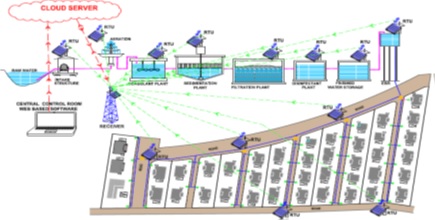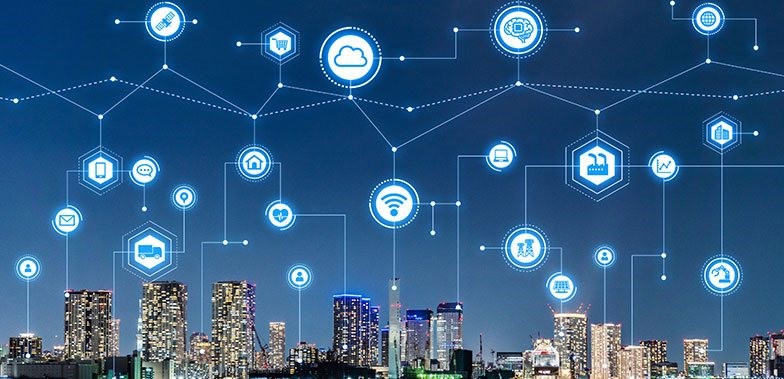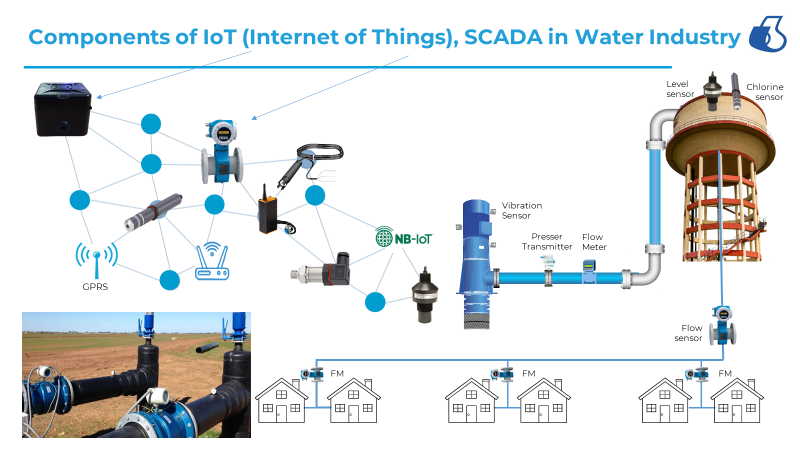One cannot think about life without water. We are blessed with adequate natural resources of water, but increasing population, the alarming rate of global warming and rapid industrialization coupled with lack of adequate and improved management of the water supply systems resulted in the increased rate of water consumption, wastage of water and deteriorating condition of the water supply networks, resulted in the scarcity of water. Pure and safe drinking water has always been a necessity for human life. It is therefore desirable that every individual has access to safe, affordable and sufficient quantity of water for drinking, other personal use and sanitation. India has long faced the challenge of providing safe drinking water to over 700 million people in more than 1.5 million villages. In 1972,the government began to improve rural water supply, and in the mid-1980s the issue was declared a national priority. As a result by 2011 ,95 percent of India’s rural population had access to some form of water supply infrastructure. In practice however many systems were no longer functional. The key issue was that systems were designed and constructed by state engineering agencies with little participation from local communities. In the face of accumulating impacts including urbanizationand climate change, municipalities are increasinglyembracing an integrated approach to water managementthat captures the full spectrum of a community’s impact onwater. This approach cuts across traditional municipaldelivery areas, to include infrastructure design andoperations, land use planning and approvals, publiceducation and participation, emergency planning andresponse, pollution prevention. This shift in water management, from a narrower operationalfocus on water service delivery and wastewater treatment, toa broader notion of ‘sustainable water management’ marks achange for municipalities, one that takes time to adopt andinvolves continuous innovation, improvement andevaluation. Smart city is an upcoming era, there are many houses in which high and middle class people can have facilities according to their comfort. Based on the people population, season, etc, the usage of water is varying. So, water supply management is very much needed and it should be maintained properly. In existing method, corporation may not know how much water is used and the wastage. To avoid the wastage of the water, the proposed system has been developed for water supply management with sensor devices. Ministry of Jal Shakti aims to provide every person with adequate safe water for drinking, cooking and other domestic basic needs on a sustainable basis. This basic requirement should meet minimum water quality standards and be readily and conveniently accessible at all times and in all situations. Under the National drinking water programme, the ministry in February 2018 has initiated a project in the name of “Swajal” that is designed as a demand driven and community centred program to provide sustainable access to drinking water to people in rural areas. The Accelerated Rural Water Supply Programme was earlier totally Government run without the participation of stakeholders. This has created a scenario, in which users consider water a free (service) commodity with the Government having the entire responsibility for running the operation. This has stifled the development of more efficient, low cost options for service delivery and denied users as consumers the opportunity to demand better services. The Government of India envisages provision of safe drinking water to all its rural habitations by 2004. In spite of good coverage, people are not fully satisfied with the available service. There are systems falling into disrepair due to poor maintenance, water shortages in summer month’s sources drying up mainly due to depletion of ground water level; increasing incidence of water quality problems, damages due to recurring floods and droughts or other natural calamities and increasing aspirations. With the rapid population growth water is becoming an increasingly scarce resource in the country. The provision of extensive irrigation infrastructure over the past decades is one of India’s major achievements. The fresh water crisis is already evident in many parts of the world, varying in scale and intensity at different times of the year. Many fresh water eco-systems are degrading. The crisis is the result of both natural factors and human actions. Failure of monsoon, desertification and recurring droughts bring water related miseries to many. Further, uncontrolled extraction of groundwater for agriculture is driving the ground water table deeper and deeper. The system of “water right” under common law of many countries gives the ownership of groundwater to the land owner, despite the fact that groundwater is a shared resource from common pool aquifers. Besides the sustainability of sources, wide spread pollution of surface and groundwater is affecting the quality. Chemical contaminates like arsenic, fluoride, nitrate, iron and salinity are posing problems world over. How to mitigate these problems – can we find any way out? There are technologies. Are they cost-effective? There are alternative sources for supply but at what cost? We can no longer show our blind eye to these water quality related issues. Let us deliberate to answer these questions. Managing water cannot be seen as a sector in isolation. It is embedded in the functioning of Local Governments. If sustainability of water as a service and a resource is to be achieved, then sustainability of Local Governments as an accountable tier of government has to be ensured. In an era of multi-tiered Governments, water must be seen in the context of the finances, institutions and processes that link the different tiers of government together. The importance of local governments in ensuring that we meet the water challenge suggests that community participation and community involvement in water management is essential. We should not get caught in a debate about local governments or communities in our service delivery paradigms. It is not one or the other. Service delivery is a function of an effective relationship between local governments and the communities they represent. Institutions for service delivery including water services, must take advantage of the complementarily between communities and their local governments if scaling up and sustainability are to be achieved. Water is a precious commodity for life itself. Because of its preciousness we must seek to put a value to water.
MUNICIPAL WATER MANAGEMENT





